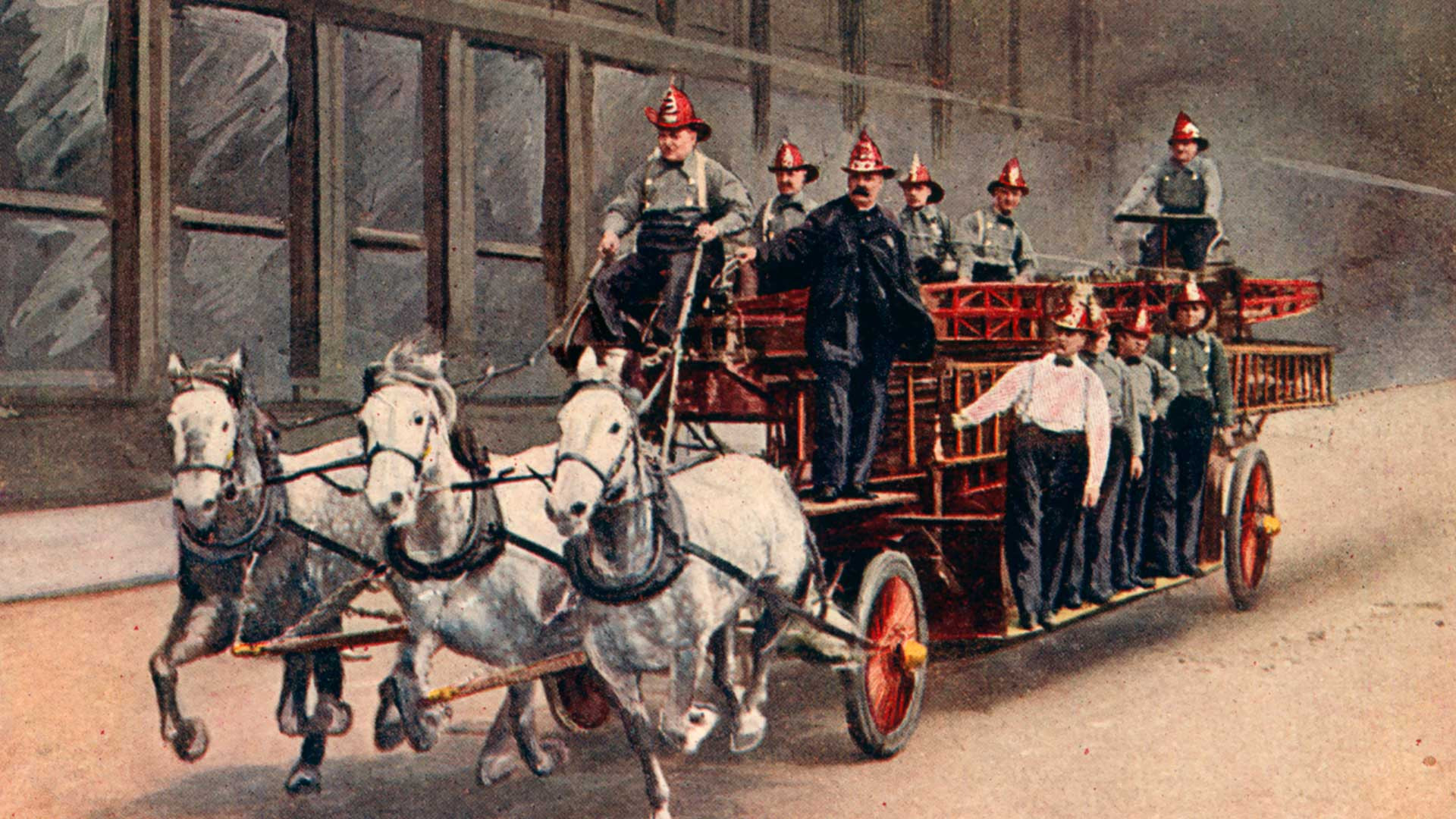Contents
Firefighting has undergone a remarkable transformation, evolving from rudimentary community efforts to sophisticated, technology-driven operations. While advancements in equipment and techniques have significantly improved fire safety, climate change and evolving urban landscapes present new and complex challenges for modern firefighters.
 alt text: An antique postcard depicting Chicago firefighters on a horse-drawn fire engine around 1890.
alt text: An antique postcard depicting Chicago firefighters on a horse-drawn fire engine around 1890.
For centuries, firefighting relied heavily on “bucket brigades,” where community members formed chains to transport water to the fire. This ad-hoc approach persisted until the 17th century, when rapidly expanding towns, often constructed with flammable materials like wood and thatch, necessitated more organized methods. The devastating Great Fire of London in 1666 spurred the development of fire pumps and the establishment of the first fire insurance companies. Policyholders displayed fire marks on their buildings to signal their coverage. However, buildings often burned until the corresponding insurance company’s fire brigade arrived. A similar system existed in the early United States until Benjamin Franklin co-founded the all-volunteer Union Fire Company in Philadelphia in 1736, offering protection to all citizens regardless of insurance status. The world’s first municipal fire brigade was established in Edinburgh, Scotland, in 1824, followed by the first professional force in Cincinnati, Ohio, in 1853. Today, the United States boasts approximately one million firefighters across over 29,000 departments.
Advancements in Equipment and Technology
In 1721 and 1725, Richard Newsham patented a wheeled “water engine” with a 170-gallon cistern, a significant advancement in firefighting technology. These hand-operated pumps remained the standard for much of the 18th century. The first steam-powered fire truck appeared in 1829, though its heavy engine posed challenges. In 1832, the New York Mutual Hook & Ladder Company No. 1 employed a horse to pull its fire truck, a practice quickly adopted nationwide. Dalmatians often accompanied the horses, guarding them and alerting them to the fire bell.
 alt text: A modern fire truck equipped with a ladder and hoses.
alt text: A modern fire truck equipped with a ladder and hoses.
By 1925, gasoline-powered trucks largely replaced horse-drawn, steam-powered vehicles. As urbanization intensified and buildings soared higher, most trucks incorporated turntable-mounted ladders, known as Hayes ladders after their 1868 inventor, Daniel D. Hayes. Modern fire trucks now come in a wide range of configurations, often costing upwards of $1 million. Firefighters benefit from advanced equipment like sophisticated helmets, self-contained breathing apparatus, and fire-resistant clothing. Technological advancements like thermal imaging cameras and firefighting aircraft, including planes and helicopters equipped to drop water or foam, further enhance firefighting capabilities.
The Changing Nature of Firefighting
Modern building construction and equipment have made firefighting safer in some respects. However, larger homes with increasing densities of flammable materials present new challenges. Fire codes, often implemented after tragic events, have significantly improved building safety. The 1903 Iroquois Theater fire in Chicago, which claimed over 600 lives, led to the adoption of panic bars and illuminated exit signs. The 1937 New London, Texas, school explosion, caused by a gas leak, prompted the addition of odorants to natural gas. The 1985 Bradford City soccer club fire in England resulted in major stadium safety overhauls, including banning wooden grandstands.
 alt text: A modern fire truck equipped with a ladder and hoses.
alt text: A modern fire truck equipped with a ladder and hoses.
While a 19th-century firefighter could likely adapt to a 21st-century fire crew, the nature of fires themselves is changing. Historically, large-scale urban fires were common. However, improved building codes and firefighting techniques seemed to have relegated such conflagrations to the past—until the 1991 Oakland firestorm. Recent events in Los Angeles, Maui, and Jasper, Alberta, highlight a new trend: wildfires encroaching upon urban areas. This blurring of urban and rural boundaries complicates firefighting strategies. While structural fires demand rapid extinguishment, wildfire management often involves controlled burns to reduce fuel loads. However, the “gentrification of rural areas” and climate change have made prescribed burns increasingly difficult to implement. Hotter, drier conditions exacerbate fire development and spread, contributing to a rise in fire incidents.
Conclusion: Facing the Future of Fire
Despite centuries of advancements in fire prevention and firefighting, fire remains a formidable threat. The courage and dedication of firefighters continue to be our primary defense. However, evolving fire dynamics necessitate adaptable strategies, integrating modern technology with a deeper understanding of the complex relationship between human development, climate change, and the increasing prevalence of wildfires.